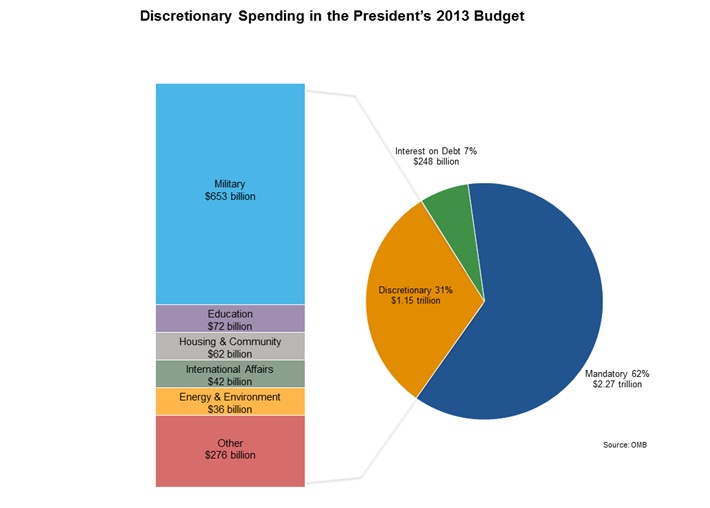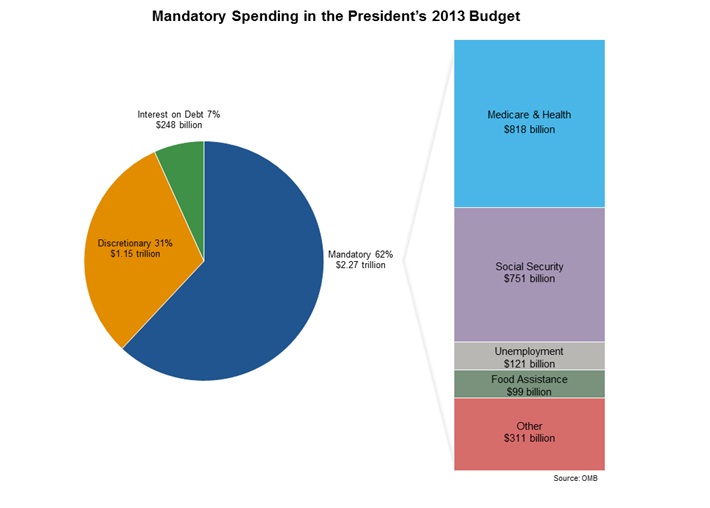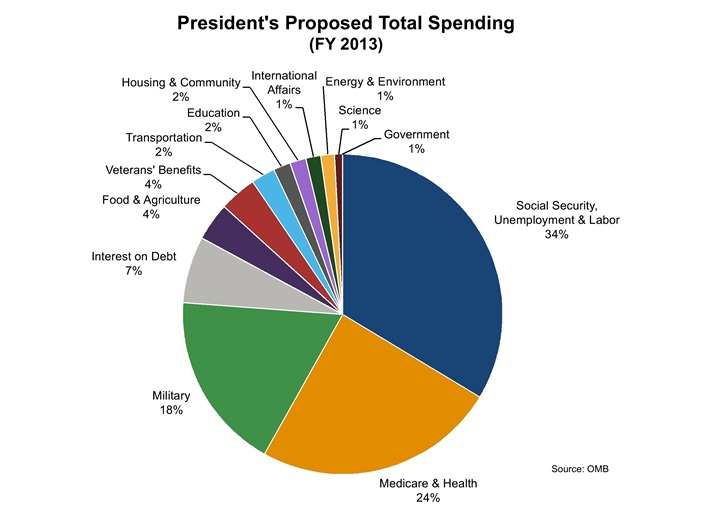President Obama's Fiscal Year 2013 Budget
Feb. 29, 2012 - Download PDF Version, Notes and Sources
Budget Snapshot
On Feb. 13, President Obama released his fiscal year 2013 budget proposal, which includes $3.67 trillion in new spending. That’s a 3.7 percent decline from 2012 levels, after adjusting for inflation.
Discretionary programs—like education, the military, and environmental protection—account for $1.15 trillion, or 31 percent, of the new budget. That includes around $73 billion for education, a 2 percent increase over last year. A poll by the Pew Research Center found that 62 percent of Americans support increasing education funding—the strongest support for any type of spending—even when asked in the context of how the federal government should reduce budget deficits.

Well over half of the budget—62 percent or $2.27 trillion—funds mandatory spending, which includes earned-benefit programs like Social Security and Medicare. Those two programs are overwhelmingly popular among the American public. A Reuters poll found that more than 70 percent of Americans oppose cuts to those programs.

Combining all discretionary and mandatory spending—plus interest on the federal debt—shows the overall spending priorities in the president’s new budget, as you can see in the pie chart below. Together income security programs like Social Security and unemployment insurance make up the largest slice of the pie, at 34 percent. Then comes Medicare with other health programs, followed by the military.

What Is the President’s Budget Request?
Federal law requires that the president submit a budget proposal to Congress every February. That proposal begins the annual federal budget process that creates the budget for the coming fiscal year, which begins on Oct. 1. For more on who decides the federal budget, see Federal Budget 101.
Why Does the President’s Budget Matter?
Though the budget ultimately enacted by Congress may look very different from the budget request released by the president, there are several reasons why the president’s budget is important. First, it is the president’s vision for the country in 2013 and beyond, and it reflects input from every federal agency—about which programs are important and deserve sustained or expanded funding, and which programs can be trimmed or eliminated. In an election year and at a time of conflict over federal spending, the president’s budget is in large part a political document—but an important one, because it shows the president’s priorities in great detail.
In 2013, the president’s budget is also important because it gives a blueprint for how the spending caps of the Budget Control Act—that was the August 2011 debt deal—should be distributed among different kinds of federal programs. The budget also offers a plan for what should be done about the Bush tax cuts, which have been law for a decade and have cost the U.S. Treasury trillions of dollars in revenue. Finally, the budget is important because it serves as a benchmark against which all subsequent spending legislation will be measured.